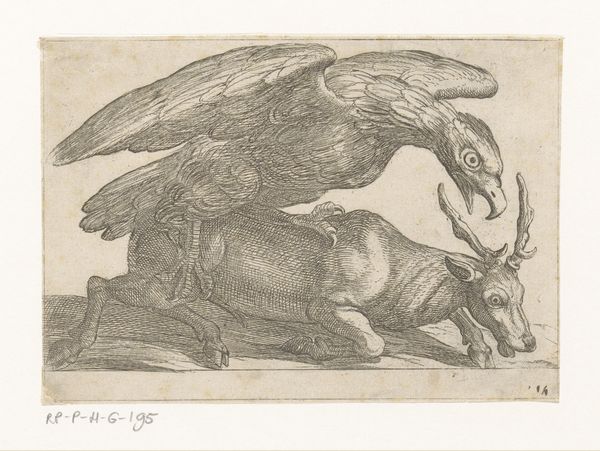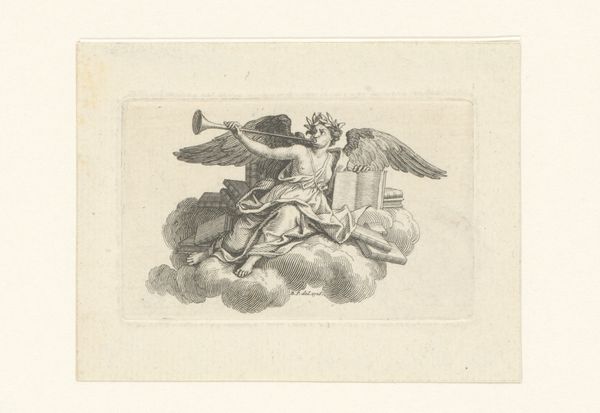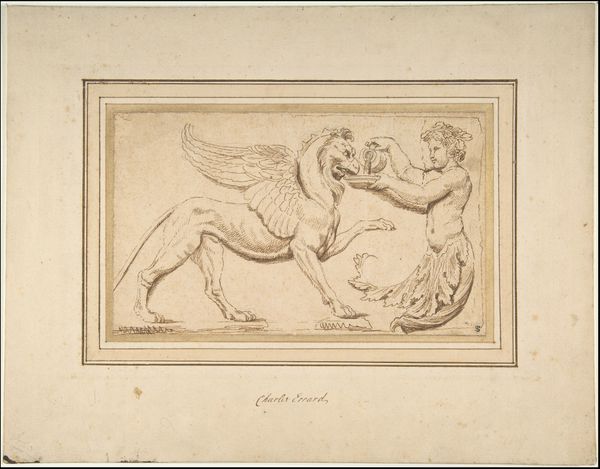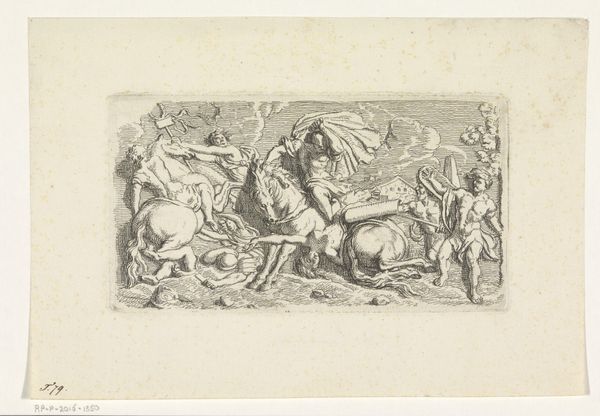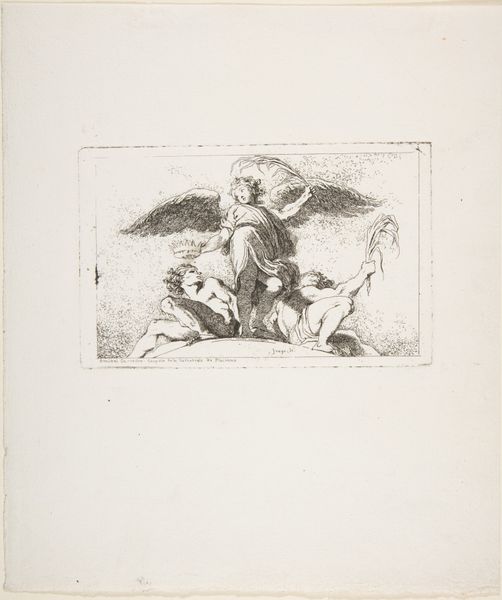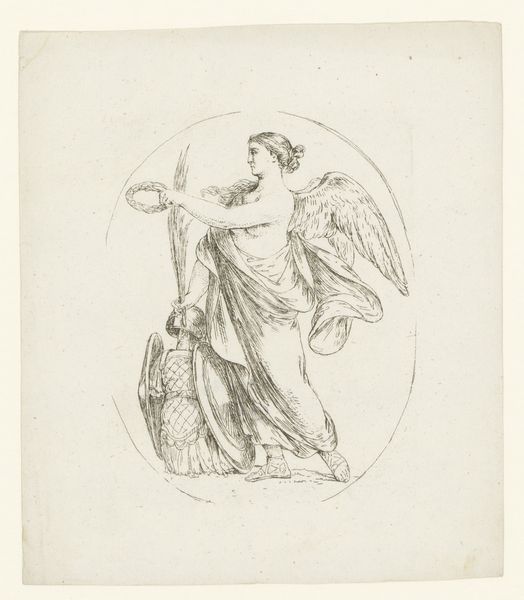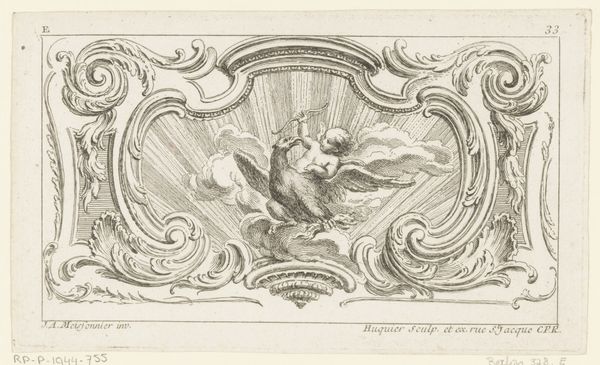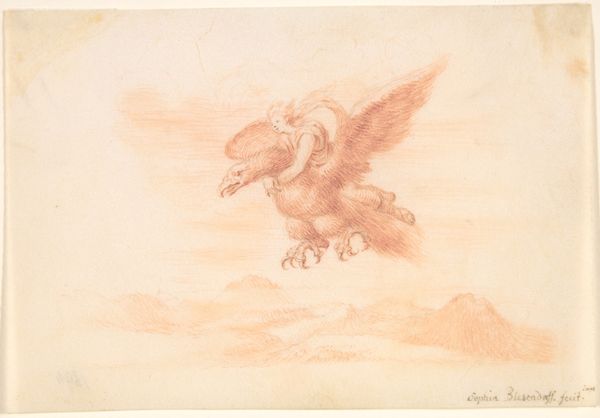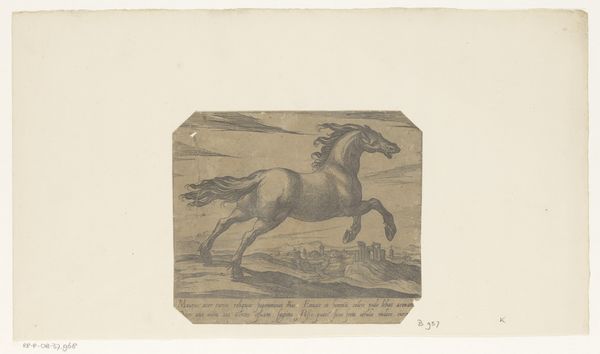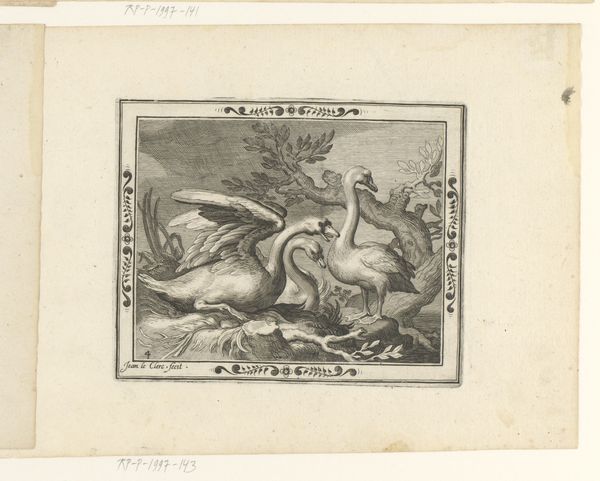
drawing, paper, pencil
#
drawing
#
allegory
#
pencil sketch
#
figuration
#
paper
#
pencil
Dimensions: 96 mm (height) x 118 mm (width) (bladmaal)
Editor: This drawing, "Athene l\u00e6gger t\u00f8mme p\u00e5 Pegasus" by Nicolai Abildgaard, dates from between 1743 and 1809. It's a pencil sketch on paper, and it feels very classical and restrained. What strikes you about this piece? Curator: The pencil work immediately draws my attention to the act of creation. The visible strokes, the artist’s hand evident in each line – it points to the labour involved. This challenges the traditional hierarchy separating the 'fine art' of the finished drawing from the 'craft' of the pencil work itself. It's on paper, not canvas or fresco. Why this conscious decision about materiality and process, I wonder? What sort of workshops would the artist have participated in and how might these informed the making of this sketch? Editor: So, you’re interested in the labor and material choices involved in the production of this drawing rather than, say, the mythology? Curator: Precisely. Mythology is content, but what I'm really intrigued by is how Abildgaard, a product of his social and historical moment, chose these specific, perhaps mundane, materials and this method. Did these economical methods influence other aspects of the work? It prompts considerations about how readily available such paper may have been. Editor: That’s fascinating. I never considered the paper itself having so much to say. Curator: Considering art from a material perspective opens avenues to connect art to everyday life. The artist uses something simple, accessible - it alters the entire dynamic. It democratizes the art-making. Does knowing it’s "just" pencil on paper change how we value it, consume it, or interpret its message? It underscores a focus on how such artworks might serve purposes other than simple viewing. Editor: I've definitely gained a new perspective. I'll pay closer attention to materials and the making processes in the future. Curator: Exactly. The 'how' and 'what with' are often as important as the 'what'.
Comments
No comments
Be the first to comment and join the conversation on the ultimate creative platform.
